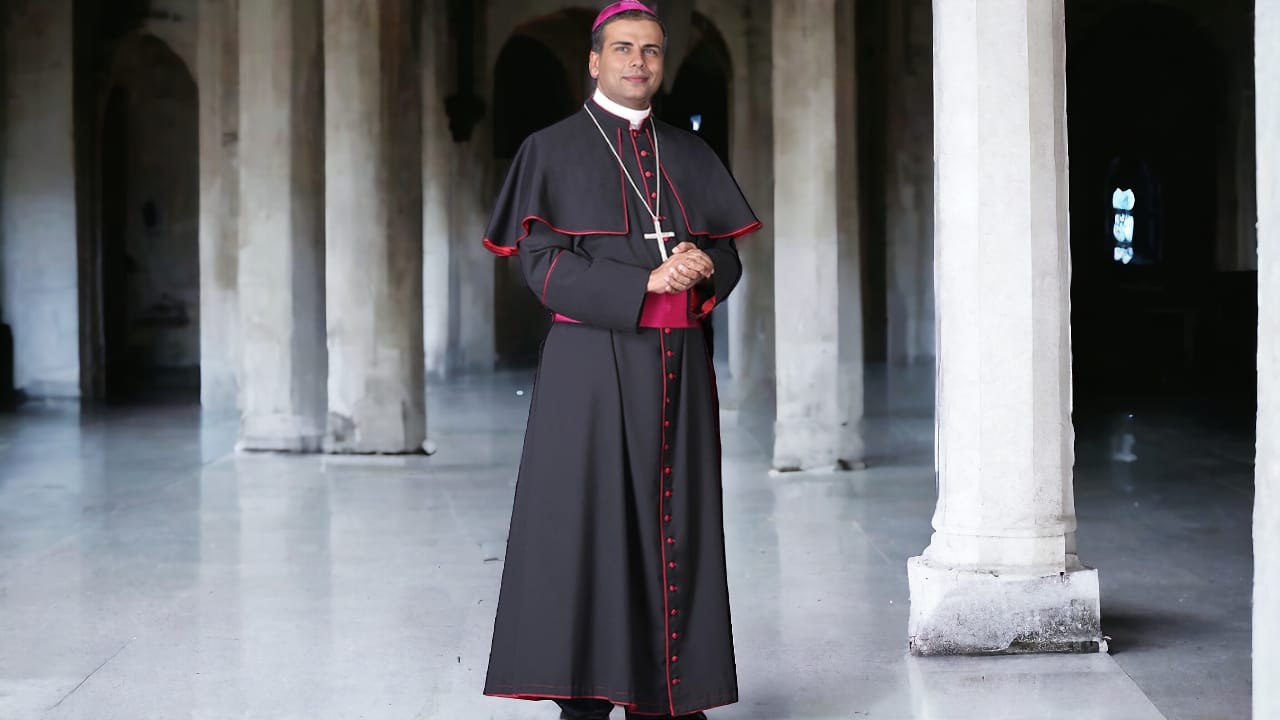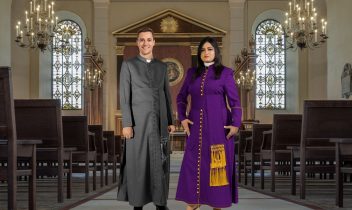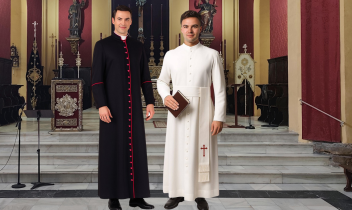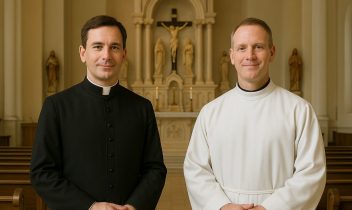No products in the cart.
Return To Shop
What Is a Priest Gown and Why Priests Wear Black Gowns
The gentle movement of a black gown as a priest walks through a quiet church is a familiar sight to many. But have you ever wondered why Priest Gown these black gowns or what they truly mean?
Called a “cassock,” the priest’s gown has been an important part of Christian dress for centuries, standing for much more than tradition. The black color carries deep meaning, symbolizing humility, simplicity, and a commitment to a life of service.
In this article, we’ll explore the story behind the priest’s gown, the symbolism of its color, and how this attire has remained a lasting part of church tradition. By the end, you’ll understand why the black gown is more than just clothing it’s an outward sign of a priest’s calling and devotion to faith.
Whether you’re familiar with the church or simply curious, this journey into the meaning and purpose of the priest’s gown will give you a fresh look at an ancient tradition.
What Is a Priest’s Gown Called
The Priest Gown commonly wear is called a “cassock.” This word, derived from the Latin vestis talaris (meaning “robe reaching to the feet”), captures the essence of the gown’s purpose. The cassock serves as a visual symbol of humility, simplicity, and devotion.
Though the cassock is often referred to as a “priest’s gown,” its name and design have evolved over centuries, becoming a familiar sight in many Christian traditions worldwide.
The cassock remains an important part of clerical attire across various Christian denominations, including Catholic, Anglican, Eastern Orthodox, and some Protestant communities. Though the design may differ slightly, the gown’s primary purpose remains consistent representing a life of faith and devotion.
The Parts of a Cassock
The cassock may seem simple, but its design elements hold specific meanings and purposes. Here are the main features of a cassock and what they represent:
- Buttons: Many cassocks have 33 buttons down the front, representing the 33 years of Christ’s life.
- High Collar: The high collar, which may sometimes be white, symbolizes purity and the formal nature of the priest’s role.
- Sleeves and Cuffs: Cassocks generally have fitted sleeves, though some styles feature open cuffs for a more ceremonial look.
- Sash (Cincture): Some priests wear a sash around their waist, known as a cincture, which can vary in color based on their rank or specific events.
These design elements give the cassock its dignified appearance while adding layers of symbolic meaning. This attention to detail reflects the cassock’s role as a garment of service and devotion.
Key Features of the Priest’s Gown (Cassock)
- Name: The Priest Gown is most commonly referred to as a “cassock.” The term “cassock” comes from the Latin word cassockus, meaning a long coat or robe. It is a distinctive piece of clothing that identifies the wearer as a member of the clergy.
- Color: The color of the cassock plays a significant role in its meaning and symbolism. Traditionally, black is the most common color, representing humility, simplicity, and the priest’s separation from the world’s distractions.
Other colors are used for special occasions or ranks within the clergy. For instance, purple is worn by bishops, red by cardinals, and white is often worn by the Pope or for certain liturgical celebrations.
The color choice often reflects the spiritual and hierarchical role of the priest, with the color black generally being the symbol of modesty and piety for everyday clergy attire.
- Design: The cassock is designed to be long, typically reaching the ankles. This long length is symbolic of the priest’s commitment to a life of service and devotion.
The Priest Gown fitted structure emphasizes the role’s seriousness and formality, allowing for both ease of movement and a dignified presence.
While the basic design remains consistent, there may be variations based on denomination or rank. For instance, bishops or cardinals might wear a cassock with additional adornments, such as epaulettes or colored sashes.
The cassock is rich in symbolism:
- Humility: The simplicity of the design reflects the priest’s humility and commitment to a life free of worldly distractions.
- Spiritual Devotion: Wearing the cassock reminds the priest of their spiritual focus, their role in guiding others in faith, and their dedication to God’s service.
- Authority: The formal nature of the gown conveys the priest’s authority in religious matters, as well as their responsibility within the community.
- Separation from Worldly Concerns: The color black and the distinctiveness of the cassock help signal the priest’s separation from everyday life, emphasizing their role as a servant of the church and of faith.
- Functionality: Beyond its symbolic importance, the cassock also serves practical purposes. Its long design offers modesty and protection, especially for priests performing rituals in a variety of settings. The Priest Gown buttoned structure and high collar also enhance the formal appearance, ensuring that the priest maintains an appropriate level of decorum and dignity in any church-related setting.
- Traditional and Timeless: The cassock remains largely unchanged in design and function over the centuries, serving as a timeless symbol of religious devotion. While some denominations have modernized their clerical clothing, the cassock continues to be a central garment for many priests, especially for formal services or liturgical events.
In summary, the cassock (Priest Gown) is a garment that symbolizes humility, devotion, and spiritual authority. Its consistent design, simple color palette, and historical roots have made it an enduring and recognizable symbol of the priesthood across Christian denominations.
The cassock represents not just an article of clothing, but a priest’s lifelong commitment to faith and service.
The Sequence of Dressing Priest’s Gown
- Undergarment: Priests may wear a lightweight garment underneath, especially in warmer climates.
- The Cassock: Carefully buttoned up from top to bottom, representing the priest’s attention to their role.
- The Cincture: If used, this is secured around the waist, adding to the cassock’s ceremonial look.
- Additional Accessories: Some priests wear simple symbols, such as a cross necklace, to complete their look.
By putting on the cassock with intention, priests affirm their commitment to their faith and the spiritual duties they fulfill for their congregation.
The Purpose of Wearing the Cassock
For priests, wearing the cassock is more than just putting on a garment it is a moment of reflection and preparation for their duties. In donning the cassock, priests are reminded of their vows and responsibilities, using this act to center themselves before worship or service.
Which Priests Wear Black Gowns?
The tradition of wearing black gowns is most commonly seen in the Catholic and Anglican churches, but other Christian denominations have adopted similar attire. Here’s a closer look at which clergy members wear black cassocks and how the tradition varies:
- Catholic Priests: Black is the standard color for diocesan priests. Catholic bishops and cardinals may wear cassocks with purple or red accents, while the Pope traditionally wears white.
- Anglican Priests: Anglican priests also typically wear black cassocks, though designs can vary. Anglican bishops may add purple accents to signify their rank.
- Eastern Orthodox Clergy: In the Eastern Orthodox Church, priests often wear cassocks in black or dark colors, with styles that may vary based on regional customs.
- Other Christian denominations: Certain Protestant communities and Lutheran churches also incorporate black cassocks, particularly during formal ceremonies or church services.
The black gown is thus not exclusive to one denomination but serves as a meaningful garment in various Christian traditions worldwide.
Why Do Priests Wear Black Gowns?
One of the most striking aspects of the cassock is its black color. But why black? The answer lies in the powerful symbolism that the color conveys. For many priests, wearing a black gown is more than just tradition; it’s a way to visually communicate their role and commitment.
- Symbol of Humility: Black is often associated with humility, reflecting the priest’s commitment to live a modest life and serve others selflessly. This humility is key to their role within the church.
- Sign of Devotion: Black represents the priest’s separation from worldly distractions, emphasizing their focus on spiritual duties over material concerns.
- Reminder of Mortality and Faith: Black also serves as a visual reminder of life’s fleeting nature, encouraging both priests and their congregations to reflect on eternity and the importance of faith.
While black cassocks are standard, other colors like purple, red, and white are also used for clergy in higher positions, such as bishops and cardinals, or during specific church seasons. Each color holds unique meaning and signifies a particular role within the church.
Priests in Black Gowns Today
Though the cassock has a deep-rooted history, modern clergy attire has diversified. Many priests today choose to wear clerical shirts with collars or simpler robes during their everyday duties, reserving the black cassock for formal services or religious ceremonies. This keeps the tradition alive while allowing priests to adapt their attire to the times.
In worship spaces, however, the cassock remains a significant garment, reminding the congregation of the sacred nature of the church and the continuity of its traditions. Even with new attire options, the cassock endures as a timeless symbol of faith.
Conclusion
The priest’s black gown, or cassock, is more than just a piece of clothing it represents centuries of tradition, humility, and dedication to faith. Its color, design, and role in church life serve as powerful reminders of a priest’s spiritual focus and commitment.
For those interested in the meaning and significance behind religious attire, the cassock invites a deeper appreciation for the values of simplicity, humility, and service that clergy embody.
If you’re looking for high-quality, authentic cassocks or other clergy attire, Holy Clergy offers a wide range of options to suit various traditions and styles. Whether you’re buying for personal use or your church, you’ll find thoughtfully crafted garments that honor the tradition and purpose of clergy wear.
Explore our collection today to discover attire that not only looks elegant but also represents the deep symbolism behind this enduring garment.
Frequently Asked Questions (FAQs)
What is a priest’s gown called?
The priest’s gown is commonly known as the “cassock.”
Why do priests wear black gowns?
Black symbolizes humility, spiritual focus, and devotion, reminding priests of their commitment to faith and service.
Which priests wear black gowns?
Black cassocks are traditionally worn by Catholic and Anglican priests, and they’re also used in the Eastern Orthodox Church and some Protestant traditions.
Are there different colors for cassocks?
Yes, certain clergy members, like bishops and cardinals, may wear cassocks with red or purple accents. The Pope is traditionally seen in white.
What is the significance of the 33 buttons on a cassock?
The 33 buttons symbolize the years of Jesus Christ’s life.
Do priests always wear the cassock?
While some priests wear cassocks daily, others reserve them for formal services and ceremonies, opting for simpler attire during everyday duties.








Recent Comments